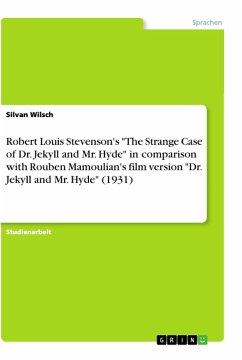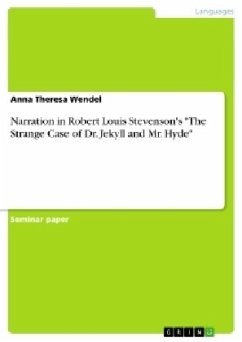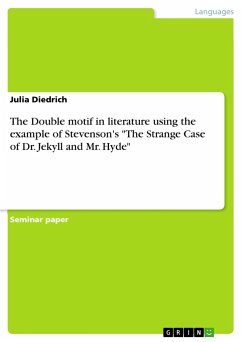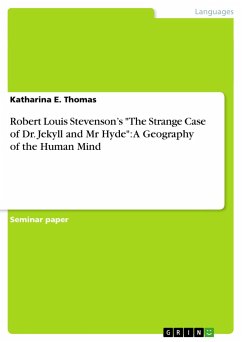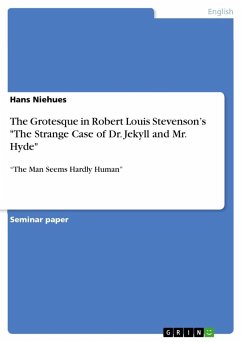Studienarbeit aus dem Jahr 2006 im Fachbereich Didaktik - Englisch - Literatur, Werke, Note: 1,3, Albert-Ludwigs-Universität Freiburg, Sprache: Deutsch, Abstract: This paper investigates whether or not the criticism of Victorian society is still conveyed in the sense of the author in Rouben Mamoulian's film. It is attempted to show whether the changes in the film vitally effect Stevenson's original message or if they simply reflect the influence of the medium.A brief genesis of both works, novel and film, will be given in the beginning, in order to understand which influences shaped Stevenson's novella and which important adaptions and changes preceded Mamoulian's film. Afterwards a short paragraph focuses on the structure and conception of the novella, since it is assumed that the original story is known. An extended summary of the film including some of the cinematic techniques applied by Mamoulian follows. Attention is thereby given to differences and similarities in the chronology of events, as well as Mamoulian's cinematic implementation of the material. This first direct comparison serves as basis for later analysis and will show how close the storyline of the adaption is to the original one.In the next section the protagonist of both works will be characterized and compared with their corresponding medial counterpart. The constellation and confrontation of the main characters is essential and will reveal changes in their role or function. Because eroticism plays a major role in the film, the last section will briefly depict this eroticism and analyze whether this sexual reading is based on indications in the novella. This last step of the comparison will show whether a sexual interpretation is justified and whether the eroticism conceals Stevensons's message. These analyses form the basis for a final conclusion on the subject-matter.

